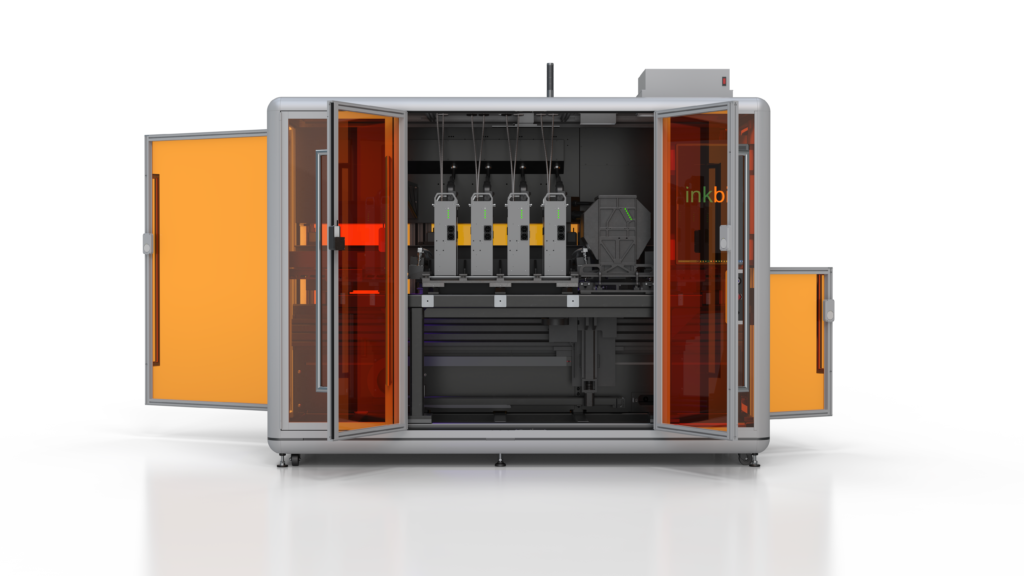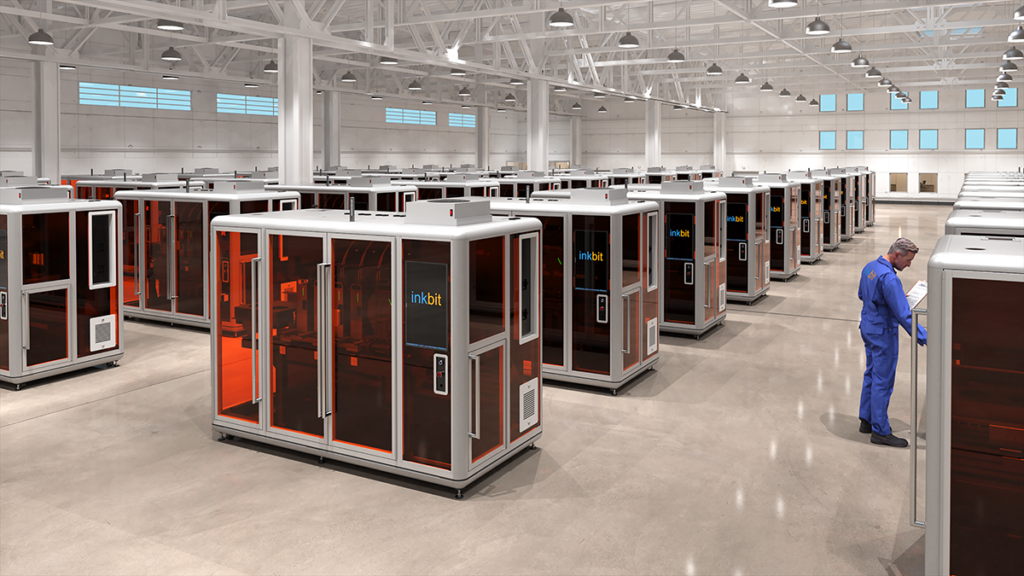If like this author you have been awaiting the launch of the first commercial 3D printer from Inkbit, then today is your day. The Massachusetts-based startup has officially announced its closed-loop 3D printer, featuring 3D machine vision, the Inkbit Vista.
The first glimpses of what would become the Vista were released in 2015, when a team at Massachusetts Institute of Technology (MIT) published research related to a multimaterial 3D printer capable of using machine vision to produce nearly complete functional components, such as 3D printed items with integrated lenses, LEDs and razorblades. It’s been nearly six years in the making and the technology is now commercially available.
The Inkbit Vista relies on an inkjet 3D printing technology, depositing photopolymer resins from piezoelectric inkjet heads. In this way, it could be compared to PolyJet from Stratasys or MultiJet from 3D Systems. However, Inkbit’s Vision-Controlled Jetting (VCJ) is also completely different in that it relies on machine vision to introduce real-time, in-process, voxel-level closed-loop control to ensure reliability and repeatability. Moreover, the company notes, “This technology converges advanced computational techniques with a scalable hardware architecture and materials chemistries inaccessible to incumbents.”
Based on pre-announcement data listed on the startup’s website, the Inkbit Vista has a build volume of 500 x 250 x 200 mm and build rate of 2.75 L/hr, producing 22 vertical mm/h and using three materials plus supports. The XY resolution is 50 microns, while the Z-axis resolution is 10-25 microns. However, the company says that its technology is scalable, so we’ll have to see what that means exactly.
Inkbit suggests that VCJ will make it possible to “bridge the gap between prototyping and full-scale production.” The firm’s proprietary vision system captures voxel-by-voxel scan data while the printer operates at “high-speed”, ensuring that each layer is printed correctly. The company also says that VCJ “enables simple, fast, and non-hazardous post-processing of parts” and can be integrated into existing manufacturing systems. Moreover, VCJ doesn’t rely on the same acrylate and methacrylate photopolymers as past machines, thus opening up the possibility for parts that aren’t as brittle and weak as those made by other inkjet technologies.
“We are thrilled to launch Inkbit’s Additive Manufacturing System and offer a unique, rapidly deployable 3D printing solution to companies looking to adopt digital manufacturing,” said Davide Marini, co-founder and CEO at Inkbit. “Today, engineers are often using 3D printing technology to make prototypes, but limitations in materials and high costs make end-use product production difficult. At Inkbit, we’re on a mission to disrupt that notion and create a technology that provides fast printing capabilities with unmatched design freedom and reliability for even the most demanding applications and environments.”
As the inventor of inkjet 3D printing via its merger with Objet, Stratasys must understand the value of Inkbit’s technology. It participated in a $12 million investment round for Inkbit with DSM. This followed a $2.8 million investment that brings the startup’s total to roughly $15 million. Inkbit has also received funds from the Defense Advanced Research Projects Agency (DARPA), the National Science Foundation, and MassVentures. Inkbit previously partnered with Johnson & Johnson, though the details of that collaboration remain vague.
We’re still hoping to learn how the Inkbit Vista might be used to combine parts to 3D print complete functional objects, as partially demonstrated in early MIT research. Javier Ramos, who was involved in the original “Multi-Fab” project, told 3DPrint.com, “The genesis of our technology has deep roots with MIT, where the ‘Multi-Fab’ project was developed. The core concept of 3D scanning and correcting parts in real-time remains the same as ‘Multi-Fab’. Inkbit Vista is the commercial evolution of the Multi-Fab project, targeted for production customers that want to produce parts at scale.”
Specific applications for VCJ have not been revealed, though some possible uses are included in the chart provided by Inkbit below. One Inkbit investor, the Ocado Group, is implementing the technology. The company’s CEO and Executive Director, Tim Steiner CEO & Executive Director, said “… we’re working very closely with Inkbit on some of our own future developments where they’re enabling some really fantastic transformational advances.”
What that could mean is hard to say. Ocado is company with diverse operations that include everything from technology for automated warehouses and robots to machine learning for fraud detection. The company’s warehouses feature a massive 3D grid in which groceries are stored in crates and robots swarm around moving crates to pickers that pack the groceries for orders. It could be that Ocado is interested in mass customization of goods beyond groceries, with robot swarms helping to a run an immense digital factory. Like Materialise, but with robots. Your guess is as good as mine.
Subscribe to Our Email Newsletter
Stay up-to-date on all the latest news from the 3D printing industry and receive information and offers from third party vendors.
You May Also Like
Gorilla Sports GE’s First 3D Printed Titanium Cast
How do you help a gorilla with a broken arm? Sounds like the start of a bad joke a zookeeper might tell, but it’s an actual dilemma recently faced by...
Nylon 3D Printed Parts Made More Functional with Coatings & Colors
Parts 3D printed from polyamide (PA, Nylon) 12 using powder bed fusion (PBF) are a mainstay in the additive manufacturing (AM) industry. While post-finishing processes have improved the porosity of...
$25M to Back Sintavia’s Largest Expansion of Metal 3D Printing Capacity Since 2019
Sintavia, the digital manufacturing company specializing in mission-critical parts for strategic sectors, announced a $25 million investment to increase its production capacity, the largest expansion to its operations since 2019....
Velo3D Initiates Public Offering in a Bid to Strengthen Financial Foundations and Drive Future Growth
Velo3D (NYSE: VLD) has been among a number of publicly traded 3D printing firms that have attempted to weather the current macroeconomic climate. After posting a challenging financial report for 2023,...


































